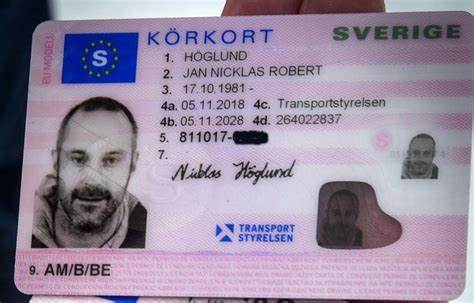10 Buy Driving License Techniques All Experts Recommend
페이지 정보
작성자 Sommer 작성일25-06-29 05:02 조회52회관련링크
본문

The Comprehensive Guide to Legally Obtaining a Driving License
Driving is a fundamental ability for numerous, providing the flexibility to take a trip where and when you want, often making life more practical and enjoyable. However, getting a driving license is a procedure that needs understanding, perseverance, and adherence to legal treatments. This guide aims to provide a comprehensive overview of the steps one must follow to legally get a driving license, highlighting essential factors to consider and frequently asked questions to make sure a smooth and problem-free experience.

Comprehending the Basics
Before diving into the application process, it's essential to comprehend the fundamental requirements and kinds of driving licenses offered. Driving laws vary significantly from nation to nation, and even within various states or provinces within the exact same country. Normally, there are a number of kinds of driving licenses, including:
- Learner's Permit: This is often the primary step in the procedure, allowing new chauffeurs to acquire experience under supervision.
- Provisionary License: Issued after passing a basic driving test, this license usually features restrictions and is a stepping stone to a full license.
- Complete Driver's License: Once all the essential requirements are satisfied, drivers can acquire a full license, which offers total driving opportunities.
- Commercial Driver's License (CDL): Required for those who want to operate industrial lorries, such as trucks or buses.
Steps to Obtain a Driving License
1. Research Study Local Driving Laws
The primary step in obtaining a driving license is to research the particular requirements in your area. Go to the official site of your regional Department of Motor Vehicles (DMV) or equivalent firm to discover comprehensive information about the licensing process, consisting of age restrictions, required files, and charges.
2. Prepare Required Documentation
Each jurisdiction has its own set of documents that need to be submitted to look for a driving license. Frequently needed documents consist of:
- Proof of Identity: A passport, birth certificate, or state-issued ID.
- Proof of Residency: Utility bills, lease arrangements, or other official documents that confirm your address.
- Social Security Number (if suitable): In some nations, a social security number or equivalent is required for identification.
- Vision Test Results: Some places require a vision test before issuing a learner's authorization or license.
3. Take a Driver's Education Course
Lots of states and countries require new drivers to finish a driver's education course. These courses are created to teach the guidelines of the roadway, traffic laws, and safe driving practices. They can be completed lagligt köRkort online or in a class setting and often include both theoretical and practical elements.
4. Request a Learner's Permit
Once the required documentation is prepared and the driver's education course is completed, the next action is to get a learner's license. This typically includes checking out the DMV or submitting an application online. You will also require to pass a written test that covers traffic laws and driving understanding.
5. Practice Driving
With a student's permit, you can start practicing driving under the supervision of a certified adult. This is an essential step in building your self-confidence and abilities behind the wheel. It's also important to gain experience in various driving conditions, such as night driving, highway driving, and driving in severe weather.
6. Arrange and Pass the Driving Test
After getting enough driving experience, you can arrange a driving test with the DMV. The test will assess your ability to safely run an automobile and follow traffic laws. You will require to bring an appropriately registered and guaranteed vehicle to the test, and the inspector will assess your driving abilities on an established path.
7. Obtain a Provisional License
If you pass the driving test, you will generally receive a provisionary license. This license might come with restrictions, such as a curfew or a limitation on the number of guests you can have in the vehicle. These restrictions are designed to reduce the risk of accidents and help new chauffeurs acclimate to the road.
8. Update to a Full License
Once you have held a provisional license for the necessary duration and satisfied any extra requirements, you can upgrade to a full driver's license. This process normally involves an easy application and may require a retest or additional documents.
Tips for a Successful Application
- Start Early: Begin the process as quickly as you satisfy the age requirement to offer yourself sufficient time to prepare.
- Stay Informed: Keep current with any modifications in driving laws or DMV procedures.
- Practice Regularly: Consistent practice is essential to developing confidence and improving your driving skills.
- Stay Calm During the Test: Anxiety can impact your efficiency, so take deep breaths and stay focused.
- Follow DMV Instructions: Pay close attention to the directions supplied by the DMV and the examiner throughout your test.
Often Asked Questions (FAQs)
Q: What is the minimum age to obtain a student's permit?
A: The minimum age varies by jurisdiction. In the United States, it normally varies from 15 to 16 years old. In the UK, the minimum age is 17. Check your local DMV website for particular details.
Q: Can I request a driver's license online?
A: Some jurisdictions allow you to finish parts of the application procedure online, such as filling out forms and scheduling tests. Nevertheless, you will typically need to visit a DMV workplace in individual to submit required files and take the driving test.
Q: What takes place if I stop working the driving test?
A: If you fail the driving test, you can usually retake it after a particular period. This duration varies by place, however it is frequently a few weeks. It's a great idea to practice more before retaking the test to improve your chances of success.
Q: Can I drive alone with a student's license?
A: No, a student's authorization normally requires you to be accompanied by a certified adult, typically over 21 years old, who is seated in the front passenger seat.
Q: Is a vision test required to get a driving license?
A: Yes, many jurisdictions need a vision test to make sure that you can securely run a car. You can generally take this test at the DMV or with an approved optometrist.
Q: How long does it take to get a complete driver's license?
A: The time required to get a complete driver's license varies depending upon your jurisdiction and the specific actions involved. Generally, it can take several months, consisting of the time needed to complete a driver's education course, hold a student's license, and pass the driving test.
Q: Can I use a provisional license to drive for work?
A: It depends on the limitations put on your provisionary license. Some provisionary licenses allow you to drive for work, while others may have particular limitations. Inspect your license for information or get in touch with the DMV for explanation.
Q: What is the distinction between a student's authorization and a provisionary license?
A: A learner's permit is the very first phase of the licensing procedure and permits you to drive just under supervision. A provisional license, on the other hand, grants you more driving advantages but might still have some restrictions, such as a curfew or guest limitations.
Q: Can I request a business driver's license (CDL) without a complete driver's license?
A: No, you usually require a full driver's license before obtaining a CDL. A CDL is a specific license that requires extra training and testing, and it is only issued to those who have demonstrated the capability to securely operate a standard automobile.
Q: What should I do if I lose my driving license?
A: If you lose your driving license, you ought to report it to the DMV and obtain a replacement. You might require to offer proof of identity and pay a fee. It's likewise an excellent idea to inform your insurance coverage business and any other relevant celebrations.
Obtaining a driving license is a considerable turning point that opens new opportunities and increases independence. By following the actions described in this guide and staying informed about regional laws and requirements, you can ensure a smoother and more effective licensing process. Keep in mind that driving is a serious responsibility, and taking the time to learn and practice is important for your safety and the safety of others on the roadway.
